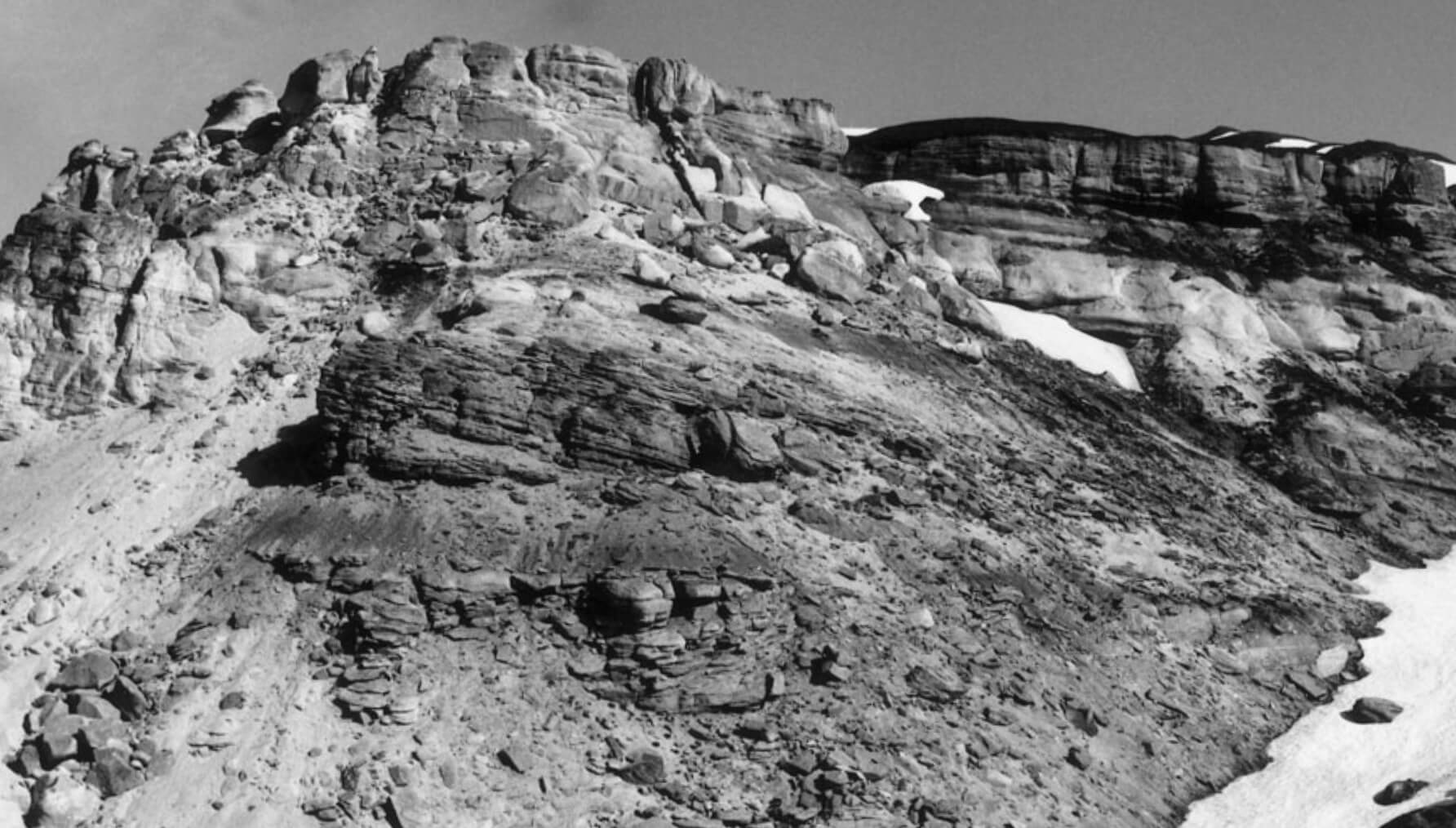
How to Cite
Share
Abstract
A rocky shore developed in early Middle Jurassic times by transgression of the crystalline basement in Milne Land at the western margin of the East Greenland rift basin. The basement is onlapped by shallow marine sandstones of the Charcot Bugt Formation, locally with a thin fluvial unit at the base. The topography of the onlap surface suggests that a relative sea-level rise of at least 300 m took place in Early Bathonian – Middle Oxfordian times. The sea-level rise was punctuated by relative stillstands and falls during which progradation of the shoreline took place. Palynological data tied to the Boreal ammonite stratigraphy have greatly improved time resolution within the Charcot Bugt Formation, and the Jurassic succession in Milne Land can now be understood in terms of genetically-related depositional systems with a proximal to distal decrease in grain size. The sequence stratigraphic interpretation suggests that translation of the depositional systems governed by relative sea-level changes resulted in stacking of sandstone-dominated falling stage deposits in the eastern, basinwards parts of Milne Land, whereas thick, remarkably coarse-grained transgressive systems tract deposits formed along the western basin margin. The bulk of the Charcot Bugt Formation consists of stacked sandstone-dominated shoreface units that prograded during highstands. The overall aggradational to backstepping stacking pattern recognised in the Charcot Bugt Formation is comparable to that in the contemporaneous Pelion Formation of the Jameson Land Basin and in correlative units of the mid-Norway shelf and the Northern North Sea. We suggest that the long-term evolution of the depositional systems may have been controlled by long-term eustatic rise acting in concert with relative sea-level changes reflecting regionally contemporaneous phases of rift initiation, climax and gradual cessation of rifting.
How to Cite
Share
Downloads
Editors: Jon R. Ineson and Finn Surlyk
The Jurassic rocks of Denmark and East Greenland record the evolution of two discrete portions of the Mesozoic rift complex, now separated by the North Atlantic Ocean. The Jurassic of Denmark and adjacent areas occurs mostly in the subsurface and research has thus focussed [...]










